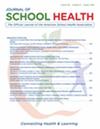Factors Associated with Mental Health Care among Adolescents in Southern California
Abstract
BACKGROUND
Mental health care is critical to improving mental health but factors associated with student utilization are poorly understood.
METHODS
Data were from high school students (N = 2933; mean age = 15.7 ± .6) enrolled in a California cohort. We examined associations of sociodemographic factors, substance use, and mental health symptoms at baseline (Fall 2021) with mental health care at follow-up (Spring 2022).
RESULTS
At follow-up, 7.7% of students reported out-of-school therapy, and 16.0% reported in-school counseling. Generally, therapy was more common for female and gender minority (vs male), some sexual minority youth (vs heterosexual), black, non-Hispanic white, and multi-ethnic (vs Asian), and English language speakers. Higher socioeconomic status was associated with greater use of out-of-school therapy, but not in-school counseling. Students with clinical levels of mental health symptoms, or alcohol or e-cigarette use had greater odds of mental health care (ORs = 1.42-2.61;ps <.05), though utilization was less than 20% for out-of-school therapy and less than 30% for in-school counseling among these students.
CONCLUSIONS
Mental health care is underutilized, and disproportionately used by certain student sub-groups. Findings indicate a need to increase mental health care utilization in- and out-of-school.

 求助内容:
求助内容: 应助结果提醒方式:
应助结果提醒方式:


